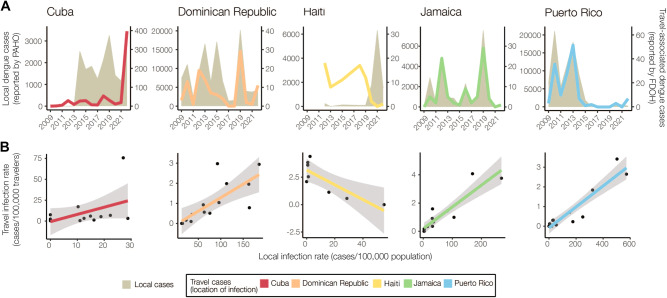Fig. 2. Travel surveillance from Florida correlates with local dengue infection rates in endemic countries and territories with robust local surveillance and case reporting.
A Yearly local dengue cases (left y-axis, gray shaded area) reported by PAHO and yearly travel-associated dengue cases (right y-axis, colored lines) reported by FDOH were sorted by the origin of exposure. The datasets were compared using Pearson’s correlation coefficient. There were strong positive correlations between travel and local cases for the Dominican Republic (Pearson r = 0.764, p = 0.001), Jamaica (r = 0.960, p < 0.001), and Puerto Rico (r = 0.911, p < 0.001), with no significant correlation for Cuba (r = 0.498, p = 0.070) and a negative correlation for Haiti (r = −0.694, p = 0.056). B The local dengue virus incidence rates for each country or territory were calculated by the number of locally reported cases per month per 100,000 population. The travel dengue virus incidence rates for each country or territory of presumed exposure were calculated by the number of travel-associated cases per month per 100,000 air passenger journeys entering Florida from endemic locations. Colored lines represent a two-sided linear regression model with local infection rate as the predictor variable and travel infection rate as the outcome variable. Gray shaded area represents standard error. There were strong positive correlations between travel and local incidence for the Dominican Republic (Pearson r = 0.750, p = 0.002), Jamaica (r = 0.912, p < 0.001), and Puerto Rico (r = 0.935, p < 0.001), with no significant correlation for Cuba (r = 0.458, p = 0.100) and a negative correlation for Haiti (r = −0.825, p = 0.012). The negative correlation between the local and travel infection rates may have been driven by a decreased travel volume to Florida from 2020 to 2022 (Supplementary Fig. S2).

